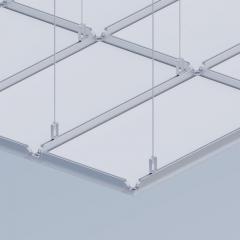

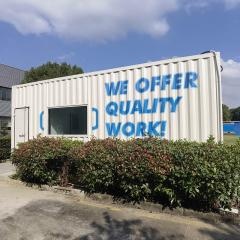
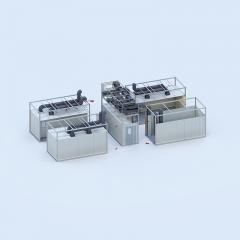
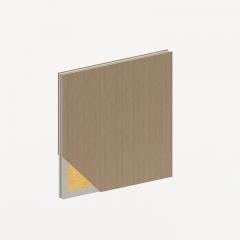
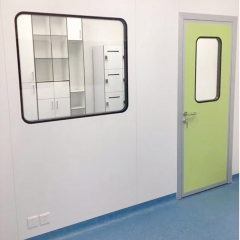

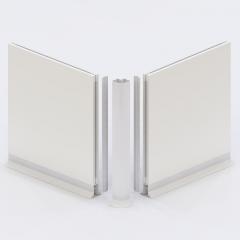

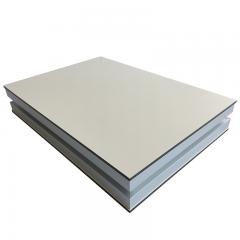
Cleanrooms are controlled environments that are specifically designed to minimize the presence of contaminants such as dust, airborne particles, and microorganisms. They play a vital role in various industries, ensuring the quality of processes and products. With the ever-increasing demand for cleanliness and precision, modular clean rooms have emerged as a groundbreaking solution for cleanroom manufacturing companies across different sectors. Industrial clean rooms provide an optimal environment for manufacturing processes that require high levels of cleanliness and sterility. From semiconductor fabrication to pharmaceutical production, clean rooms play a critical role in ensuring product quality and maximizing yields. However, constructing a traditional clean room can be a complex and time-consuming task. This is where modular clean rooms come into the picture. A modular clean room is a versatile and flexible solution that offers several advantages over conventional clean room construction. These clean rooms are built using pre-fabricated modular panels, which can be easily assembled and disassembled to meet specific requirements. This modular approach significantly reduces construction time and offers greater flexibility for future modifications or expansions. Clean room laboratories are another key application area for modular clean rooms. Research facilities, academic institutions, and even independent laboratories require controlled environments to conduct experiments and tests with precision and accuracy. Modular clean rooms provide the ideal controlled conditions, ensuring stable temperature, humidity, and particle control. Researchers can focus on their scientific endeavors without worrying about external contamination compromising their results. The semiconductor industry heavily relies on clean rooms for the manufacturing of microchips with intricate circuitry. Modular clean rooms are a perfect fit for semiconductor fabrication facilities as they can be tailored to meet the stringent requirements of particle control, electrostatic discharge, and temperature control. These clean rooms effectively minimize defects and increase the yield of high-quality semiconductors, contributing to the advancement of technology. In the pharmaceutical field, clean rooms are essential for the production of drugs and medical devices. Stringent regulations and quality standards dictate that pharmaceutical clean rooms maintain the highest level of cleanliness to ensure the safety and efficacy of the products. Modular clean rooms offer a customizable and cost-effective solution that meets these requirements, enabling pharmaceutical companies to adhere to regulatory guidelines while optimizing their manufacturing processes. Overall, modular clean rooms have revolutionized the way cleanroom environments are designed and constructed. With their adaptability, efficiency, and versatility, they have become indispensable for cleanroom manufacturing companies, indus...
Modular laboratories are an innovative and efficient approach to contemporary scientific research. It minimizes the complexity and high cost of traditional laboratories, providing scientists with a flexible and adaptable research environment. Modular laboratories can be used in a variety of fields, including life sciences, materials science, and environmental science. In the field of life sciences, modular laboratories have extensive and far-reaching applications. Scientists can use modular labs to conduct experiments such as genomics research, protein engineering, and cell culture. The flexibility of modular laboratories allows scientists to quickly set up different experimental environments and conduct efficient data collection and analysis. This provides strong support for researchers to search for new treatments and drugs in the biomedical field. In the field of materials science, modular laboratories also play an important role. Scientists can use modular laboratories to study the synthesis of new materials, physical property testing, and optimization of material properties. The scalability and flexibility of modular laboratories allow scientists to quickly conduct many different experiments, accelerating the development and application of new materials. This is of great significance for promoting the development of materials science and responding to industrial needs. In addition, in the field of environmental science, the application of modular laboratories has also received widespread attention. Scientists can use modular laboratories to conduct monitoring and analysis of environmental pollutants, assessment of ecosystems, and emergency response to environmental emergencies. The portability and efficiency of modular laboratories allow scientists to quickly collect and analyze environmental samples and accurately assess environmental quality. This helps protect the environment, protect biodiversity, and provide a scientific basis for environmental management and decision-making. In summary, modular laboratories demonstrate great application potential in fields such as life sciences, materials science, and environmental science. Its flexibility and efficiency provide scientists with an innovative research platform and promote the progress and application of scientific research. With the continuous advancement of technology, it is believed that modular laboratories will continue to play an important role in the scientific field and make greater contributions to the progress of human society. pharma clean room、pharmaceutical cleanrooms、lab shipping containers and medical device cleanrooms etc.
Laboratories play a crucial role in scientific research, healthcare, and various industrial sectors. Over the years, advancements in laboratory design and equipment have revolutionized the way experiments are conducted and data is analyzed. This article explores the concepts of container laboratory design, laboratory furniture, and the importance of high-quality components like laboratory cabinets, doors, and steel structures. Container Laboratory Design: In recent years, the concept of container laboratories has gained popularity due to their convenience and versatility. These laboratories are housed within repurposed shipping containers, allowing for easy transportation and rapid deployment. The design incorporates all essential laboratory infrastructure and equipment, creating a fully functional workspace for scientists, researchers, and field experts. By utilizing container laboratories, professionals can conduct experiments and investigations in remote or underserved areas where traditional laboratory facilities may be limited. Laboratory Furniture Supplier: To ensure efficient and safe laboratory operations, it is essential to collaborate with reputable laboratory furniture suppliers. These suppliers offer a wide range of specialized furniture tailored to the unique needs of laboratories. Whether it is lab benches, fume hoods, storage cabinets, or ergonomic chairs, laboratory furniture suppliers provide high-quality products that meet stringent industry standards. The right supplier will not only provide durable and reliable furniture but also assist in customizing solutions to maximize space utilization and workflow efficiency. Laboratory Cabinets: Laboratory cabinets are critical for storing and organizing equipment, chemicals, and samples. They are designed to meet specific requirements such as chemical resistance, ventilation, and secure storage. Reliable laboratory cabinet manufacturers ensure that their products are made of high-quality materials that withstand harsh laboratory environments and adhere to safety regulations. Additionally, cabinets can be customized with features like adjustable shelving, lockable doors, and specialized compartments to accommodate various laboratory needs. Laboratory Doors Manufacturers: Laboratory doors not only provide security but also play a vital role in maintaining controlled environments. Manufacturers specializing in laboratory doors produce options that minimize air leakage, resist chemical exposure, and facilitate easy movement of equipment and personnel. These doors can be designed as sliding, hinged, or automatic, ensuring seamless access while maintaining the integrity of the laboratory conditions. Collaborating with reputable laboratory doors manufacturers guarantees the installation of robust doors that contribute to the overall safety and efficiency of the laboratory environment. Steel Laboratories: Steel has become a popular choice for laboratory construction due to its durability, vers...
Clean room panels play a crucial role in maintaining the integrity of controlled environments. These specialized panels, commonly made from high-pressure laminate (HPL), are designed to meet strict specifications and provide a reliable barrier against contaminants. In this article, we will explore the features and materials used in clean room panels, as well as their key specifications. Clean room panels, often referred to as cleanroom wall panels, are essential components in the construction of clean rooms. These controlled environments are required in various industries, including pharmaceuticals, electronics manufacturing, and biotechnology, where even the smallest particles or microorganisms can compromise the quality of products or research. One widely used material in clean room panels is high-pressure laminate (HPL). HPL cleanroom panels offer excellent durability, chemical resistance, and easy maintenance, making them suitable for the stringent requirements of clean room applications. HPL panels are composed of layers of resin-impregnated kraft paper, which are bonded under high pressure and temperature. The top layer is a decorative sheet that enhances the panel's aesthetics and can be customized to match specific design requirements. Clean room panel specifications vary depending on the desired level of cleanliness and the industry standards. Some common specifications include panel dimensions, surface finishes, and fire ratings. Panel dimensions are typically standardized, with common sizes such as 4'x8' and 4'x10', although custom sizes are also available to accommodate different room configurations. Surface finishes vary from smooth to textured, with smooth finishes being easier to clean and maintain. When it comes to clean room panel material, HPL is a popular choice due to its properties and performance. HPL panels are non-porous and resistant to moisture, chemicals, and microbial growth. This makes them easy to clean and disinfect, ensuring a sterile environment. Additionally, HPL panels have excellent fire-resistant properties, contributing to overall safety in clean room facilities. Cleanroom wall panels are not only designed to provide a physical barrier but also to integrate seamlessly with other clean room components. They can accommodate various fixtures, including pass-through boxes, air handling units, and electrical outlets, while maintaining the required level of cleanliness. In conclusion, clean room panels, particularly HPL cleanroom panels, are essential for maintaining controlled environments in industries with strict cleanliness requirements. These panels offer durability, chemical resistance, and easy maintenance. With their customized specifications and integration capabilities, clean room panels contribute to the overall success and efficiency of clean room facilities. Whether it is in pharmaceuticals, electronics manufacturing, or biotechnology, clean room panels play a vital role in ensuring a clean and sterile...
Clean rooms require stringent environmental control to maintain a sterile and contaminant-free environment. Key components of clean rooms are the doors, which play a critical role in maintaining the desired level of cleanliness. In this article, we will explore the features, pricing, and top manufacturers of High-Pressure Laminate (HPL) doors for clean rooms. Additionally, we will discuss the benefits of sliding doors in clean room applications. Features of HPL Doors: HPL doors are specifically designed for clean room environments, offering a combination of durability, aesthetics, and hygienic properties. These doors are constructed using high-quality materials and engineered with precision to meet the strict requirements of clean room standards. Some notable features include: Material: HPL doors are made from high-density fiberboard (HDF) as the core material and covered with a layer of HPL on both sides. This construction provides excellent resistance to scratches, chemicals, moisture, and impact. Hygienic Surface: The smooth surface of HPL doors prevents the accumulation of dust and contaminants, making them easy to clean and maintain. This property is crucial for clean room environments where cleanliness is of utmost importance. Fire-Retardant Properties: HPL doors are manufactured to be fire-resistant, ensuring the safety of the clean room environment and its occupants. HPL Door Price: The price of HPL doors for clean rooms can vary depending on several factors, including the dimensions, design complexity, additional features, and the manufacturer. On average, the cost of a standard-sized HPL door can range from 200��200to500. However, it is essential to note that customized doors or those with special requirements may cost more. Top Manufacturers of Clean Room Doors: XYZ Clean Room Solutions: XYZ Clean Room Solutions is a leading manufacturer in the clean room industry, specializing in a wide range of clean room products, including HPL doors. They offer customized solutions and ensure high-quality standards. ABC Clean Room Technologies: ABC Clean Room Technologies is renowned for its expertise in clean room systems. Their HPL doors are known for their durability and compliance with clean room standards. DEF Clean Room Products: DEF Clean Room Products is a trusted manufacturer of clean room doors, providing a comprehensive range of options, including HPL doors. They emphasize product quality and functionality. Sliding Doors for Clean Rooms: In addition to traditional swing doors, sliding doors have become increasingly popular in clean room applications. Sliding doors offer several advantages, such as: Space Optimization: Sliding doors do not require extra space for swing arcs, allowing for better space utilization in clean room layouts. Seamless Access: Sliding doors provide smooth and silent operation, ensuring quick and convenient access to clean room areas without compromising cleanliness. Improved Airflow Control: Sliding doors min...
Commercial spaces require efficient and versatile ceiling solutions to create an appealing environment for customers and employees alike. In this article, we will explore the benefits of HPL false ceilings and clean room ceilings, along with the advantages of using aluminium ceilings and bottom load ceiling grids. HPL False Ceilings: High-Pressure Laminate (HPL) false ceilings have gained popularity in commercial settings due to their durability and aesthetic appeal. HPL panels are made by compressing multiple layers of resin-impregnated Kraft paper under high pressure to create a robust surface. The advantages of HPL false ceilings include: a) Durability: HPL panels are resistant to scratches, impact, and moisture, making them suitable for high-traffic areas such as shopping malls, airports, and office buildings. b) Design Flexibility: HPL panels come in a wide range of colors, patterns, and textures, allowing for endless design possibilities. They can mimic the appearance of natural materials like wood, stone, or metal, adding a touch of elegance to any commercial space. c) Easy Maintenance: HPL false ceilings are easy to clean and maintain, requiring minimal effort to keep them looking pristine even in busy environments. Clean Room Ceilings: Clean room ceilings are essential in commercial facilities that require strict control of airborne contamination, such as pharmaceutical labs, healthcare facilities, and electronics manufacturing units. Key features of clean room ceilings include: a) Air Filtration: Clean room ceilings are designed to integrate with HVAC systems, effectively filtering air and preventing the ingress of contaminants. This ensures a clean and sterile environment, crucial for sensitive operations. b) Sealed Joints: Clean room ceilings have tight, sealed joints to eliminate any gaps or crevices. This prevents the accumulation of dust, bacteria, or other particles, maintaining hygienic conditions within the controlled environment. c) Easy Installation: Clean room ceilings are engineered for quick and efficient installation, allowing businesses to minimize downtime during construction or renovation. Aluminium Ceilings: Aluminium ceilings offer a lightweight and versatile solution for commercial spaces. Their benefits include: a) Lightweight and Durable: Aluminium panels are lightweight, making them easy to handle and install. They are also resistant to corrosion, ensuring longevity and low maintenance costs. b) Aesthetic Appeal: Aluminium ceilings are available in various finishes, including powder-coated, pre-painted, or wood grain, offering a modern and sleek look to commercial spaces. c) Sound Absorption: Depending on the design, aluminium ceilings can enhance acoustic performance by reducing noise levels, creating a more pleasant environment for customers and employees. Bottom Load Ceiling Grids: Bottom load ceiling grids, also known as "clip-in" systems, are widely used in commercial settings for their convenience and flexib...